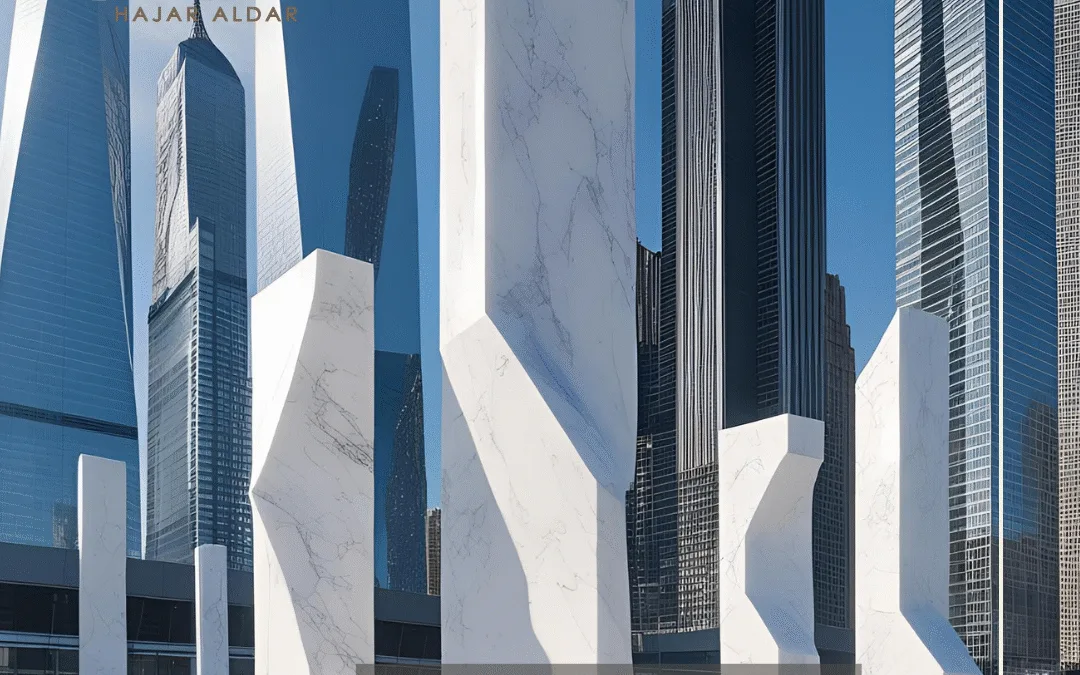Marble in the World’s Skyscrapers
Introduction
In the world of modern architecture dominated by skyscrapers and glass and steel structures, talking about marble might seem like referring to a bygone era. However, the surprise is that marble has never disappeared from the architectural scene; rather, it has found a new place even among steel and concrete towers. Today, marble is used as both an aesthetic and strategic element in the design of skyscrapers around the world—not only for its luxurious appearance but also for its physical properties and durability.
The Return of Marble in High-Rise Projects
Despite challenges posed by marble’s weight and the cost of transporting and installing it, designers and engineers are reintegrating it into skyscrapers, especially in:
-
Grand entrances
-
Main lobbies
-
Building facades
-
Luxury elevators and meeting rooms
Marble adds an unparalleled touch of luxury that reflects the tower’s identity and impresses visitors at first glance.
Why Marble in Tall Towers?
-
A Symbol of Luxury and Status
A tower designed to house a global company or a five-star hotel needs materials that instantly convey its prestige. Marble provides this visual and symbolic message immediately. -
Variety of Colors and Patterns
With many types of marble available from countries like Italy, Turkey, India, and Spain, architects can select what suits the building’s visual identity. -
Durability and Longevity
When carefully selected and treated, marble withstands heavy use without losing its shine, making it ideal for towers that receive thousands of visitors daily.
Notable Skyscrapers Using Marble
-
Burj Khalifa – Dubai
Features luxurious Italian marble in its entrances and main lobby, combined with wood and metal to create a unique visual balance. -
New World Trade Center – New York
Advanced treated marble types are used in the lobby and reception areas to create an elegant and majestic entry experience. -
Ritz-Carlton Hotel in Kuala Lumpur (within a skyscraper)
Black and gray marble were chosen to evoke a sense of sophisticated luxury in the lobby and meeting rooms.
Technologies Facilitating Marble Use in Skyscrapers
-
Lightweight Marble Panels
Technologies have been developed to install thinner marble panels reinforced with aluminum or carbon fiber supports to reduce weight without compromising appearance. -
Stain- and Scratch-Resistant Treatments
Nano-treated marble is now resistant to weather effects, allowing its use even on some exterior facades. -
Smart Installation Techniques
Use of dry or magnetic mounting systems facilitates panel removal and replacement and reduces risks during installation.
Challenges Facing Marble Use in Skyscrapers
-
Heavy weight still poses installation challenges at high floors.
-
High costs, especially when importing premium types.
-
Maintenance requirements to preserve marble’s shine.
However, these challenges are being overcome thanks to modern innovations and smart planning.
Impact of Marble on User Experience
Marble creates an immediate impression of luxury and attention to detail. When a visitor enters a skyscraper and finds polished marble floors or a rare marble-clad feature wall, it instills confidence in the quality of the project. Marble also imparts a sense of coolness and balance, making it ideal for hot climates.
The Future of Marble in Skyscrapers
With the global move toward sustainability, there is growing interest in using recycled marble or marble sourced responsibly. Marble is also being integrated with smart lighting and glass panels to create a visually balanced blend of modernity and tradition.
Conclusion
Marble in skyscrapers is no longer a difficult or outdated choice; it has become a contemporary element that reflects both luxury and technology. In the world of tall architecture, where every company or developer seeks to leave a mark, marble remains a unique way to express quality, luxury, and visual identity—from the first step inside the building to the top floor.


